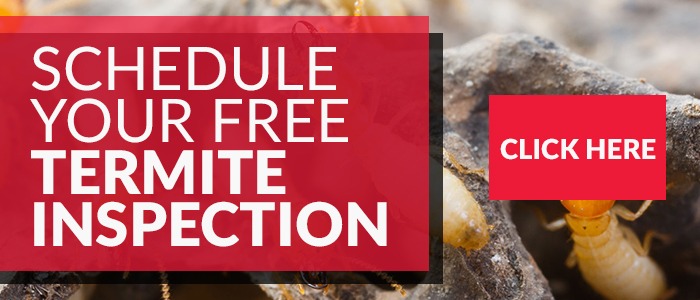During the spring and summer months, many of us will start seeing a lot of flying insects around our homes. Two of the more common, and often scarier, flying insects are ants and termites. During swarming seasons, these bugs take flight in search of new locations to build colonies and are easily noticeable outside of your home.
While both of these bugs spread their colonies by spreading their wings, it can often be difficult to distinguish between the two species and can result in homeowners getting a sense of panic that may not be needed. There are a few ways that you can inspect these flying bugs and determine whether you’re dealing with flying ants or flying termites.

Know the Difference and Inspect the Bugs
Both the ant and the termite can have wings during swarming season, and at first glance, it can be difficult to determine which type of insect you’re dealing with. Fortunately, there are a lot of differences between the two insects that can help us tell them apart.
Flying Termites have:
- Straight antennae
- Long, equal length wings
- Straight, broad waist
Flying Ants Have:
- Curved or bent antennae
- Shorter, uneven wings
- Pinched waists, with larger thorax (back side)
Look for a Segmented Body Structure
When trying to determine whether you’re looking at a flying ant or flying termite, the easiest difference to notice is the “segmented body” of the flying ant. As with most ants, there are very distinct segments of their bodies, with the head, abdomen, and thorax separated by tiny sections.
Noticeable Difference in Wing Shape & Size
The termite and ant have very different wing structures which can help identify them. While both have four wings, the flying termite’s wings will be longer and of equal length, while the flying ant will have shorter, broader wings of different length.
If you are unsure after inspecting the insects around your home whether you’re dealing with ants or termites, it’s recommended that you contact a pest control company to help you identify the insects around your home and to inspect for possible termite damage depending on which type of bug you’re dealing with.

